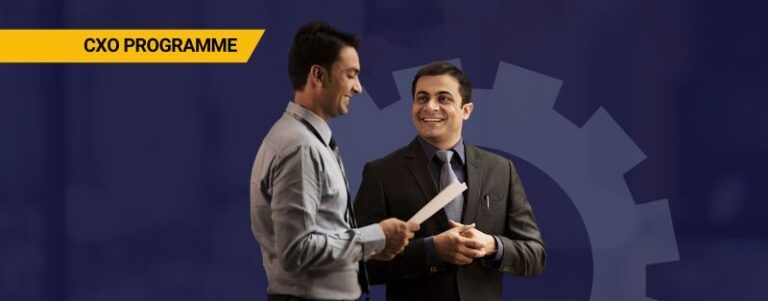The Magic of Trust: Why Laissez-Faire Leadership Works Wonders

- What is Laissez-Faire Leadership
- How Does Laissez-Faire Leadership Differ From Other Leadership Styles?
- Salient Features of Laissez-Faire Leadership
- Benefits of Implementing Laissez-Faire Leadership in the Workplace
- How Can Professionals Incorporate Laissez-Faire Leadership Into Their Own Management Style?
- Real-Life Leaders Who Follow This Style of Leadership
Manthan, the 1976 film that was made with the hard-earned money of about 500,000 dairy farmers, who all contributed two rupees to fund the production, recently made waves worldwide at the Cannes Film Festival. Inspired by the white revolution in India sparked by Verghese Kurien, the film deftly captures the ideological struggle of the farmers against a feudal centralized dairy owner who exploited them and their own cooperative, which lets them take control over their own produce. Much like Dr Rao in the fictional cooperative in Manthan, Verghese Kurien, the “Milkman of India”, adopted a laissez-faire leadership approach for Operation Flood, a massive dairy cooperative movement. Kurien, instead of dictating production methods, trusted local farmers to manage their own milk collection and distribution networks.
This decentralized approach, mirroring the independent spirit of the marketplace Kurien sought to empower, revolutionized India’s dairy industry. By relinquishing control and fostering self-reliance among farmers, Kurien’s laissez-faire leadership transformed a struggling sector into a national success story. Let’s explore what that style of leadership entails.
What is Laissez-Faire Leadership

Derived from the French term laissez-faire, which literally translates to “let do”, this leadership style prioritizes delegation and fosters trust in team members. Unlike the rigid hierarchies of the past, where orders cascaded down like pronouncements from a distant king, laissez-faire leadership thrives on a spirit of collaboration and mutual respect. In this metaphorical marketplace of ideas, employees flourish, free from the constraints of micromanagement. Creativity thrives as individuals are empowered to make their own decisions, mirroring the independent spirit of the milkmaids who determine the value and distribution of their produce.
However, laissez-faire leadership isn’t just about relinquishing control. Just as a skilled marketplace organizer ensures fair trade and a thriving environment, this leadership style requires careful selection and support. Leaders who embrace laissez-faire principles empower their teams with the tools and resources they need to succeed, fostering an environment where innovation and productivity can flourish. So, instead of a domineering boss breathing down your neck and micromanaging every step, laissez-faire leadership is about delegation, exploring individual agency, and thereby fostering a sense of ownership, responsibility, and creativity.
ALSO READ: Trait Theory of Leadership: How the World’s Oldest Case Study Supports It
How Does Laissez-Faire Leadership Differ From Other Leadership Styles?
Laissez-faire leadership, characterized by minimal intervention and high autonomy, contrasts sharply with other styles. Unlike authoritative leadership, which involves direct control, and democratic leadership, which emphasizes collaboration, laissez-faire relies on team self-management. For instance, Ratan Tata and Narayana Murthy are two Indian leaders who have been associated with this style.
Ratan Tata, the former chairman of Tata Group, was known for his hands-off approach. Consequently, he allowed his team leaders and managers to take charge and make decisions. Additionally, he trusted the capabilities of his executives and gave them the freedom to innovate and lead their respective domains.
Then there is Narayana Murthy, the founder of Infosys—another example of this leadership style. He adopted a laissez-faire approach by empowering his employees and encouraging a culture of innovation and entrepreneurship within the company. Moreover, his leadership style focused on trust and delegation, enabling team members to take ownership of their projects.
In contrast with other types of leadership, laissez-faire fosters an environment ripe for innovation and problem-solving as the team members themselves become invested in the organization’s success.
ALSO READ: Top 3 Characteristics of Top-Down and Bottom-Up Approaches
Salient Features of Laissez-Faire Leadership
Laissez-faire leadership, often referred to as delegative leadership, has several unique characteristics that set it apart from other types of leadership. These features collectively create a work environment that is both dynamic and empowering.
1. Autonomy
First and foremost, laissez-faire leadership is defined by the high degree of autonomy it grants to employees. Unlike directive leadership styles, this approach allows team members to make decisions independently. This autonomy fosters a sense of ownership and responsibility, motivating employees to excel without the need for constant oversight.
2. Trust
Trust is a cornerstone of laissez-faire leadership. Leaders who adopt this style profoundly believe in their team’s capabilities. By placing confidence in their employees, they create a supportive environment where individuals feel valued and empowered to take initiative. This trust not only boosts morale but also encourages creativity and innovation.
3. Minimal Interference
Laissez-faire leaders practice minimal interference in their team’s daily activities. They provide guidance and support only when necessary, allowing employees to manage their tasks without micromanagement. This hands-off approach fosters a sense of independence and self-reliance among team members, which can lead to higher productivity and job satisfaction.
4. Supportive Environment
Despite their hands-off approach, laissez-faire leaders are committed to creating a supportive environment. They ensure their team can access the necessary resources and tools to perform their duties effectively. Additionally, they are available to offer advice and assistance when needed, ensuring that their presence is felt without being overbearing.
5. Encouragement of Creativity
Lastly, laissez-faire leadership is synonymous with the encouragement of creativity. By allowing employees the freedom to explore new ideas and approaches, leaders can cultivate an innovative atmosphere. This emphasis on creativity not only leads to novel solutions but also contributes to the continuous improvement of processes and products.
ALSO READ: How to Master Agile Leadership? Learn from Apple’s Failure and Success
Benefits of Implementing Laissez-Faire Leadership in the Workplace

Implementing laissez-faire leadership in the workplace has many advantages. First, this leadership style significantly boosts innovation. By granting employees the freedom to explore and experiment, companies often discover groundbreaking ideas and solutions.
A. Enhanced Job Satisfaction
Laissez-faire leadership enhances job satisfaction. Employees, when trusted with autonomy, feel valued and respected. This sense of empowerment leads to greater commitment and enthusiasm for their roles.
B. Better Team Dynamics
In addition, this leadership style fosters better team dynamics. With less micromanagement, team members collaborate more effectively. They share ideas and support each other, creating a harmonious and cohesive work environment. This collaborative spirit is essential for driving collective success.
C. Improved Skill Development
Laissez-faire leadership promotes improved skill development. Employees, given the responsibility to manage their tasks, proactively seek to enhance their skills. This continuous learning and growth contribute to their professional development and benefit the organization as a whole.
D. Greater Flexibility
Finally, laissez-faire leadership offers invaluable flexibility. In today’s rapidly changing business landscape, adapting quickly is crucial. This leadership style allows organizations to remain agile and responsive to new challenges and opportunities.
ALSO READ: Distributed Leadership: A Collaborative Approach to Organizational Success
How Can Professionals Incorporate Laissez-Faire Leadership Into Their Own Management Style?
Laissez-faire leadership, while alluring in its potential to empower and unlock creativity, cannot be universally applied across all types of organizations. Just as a skilled marketplace organizer ensures a fair and thriving environment, successfully incorporating elements of this style requires careful consideration. Here are some practical steps professionals can take to cultivate their inner laissez-faire leader:
1. Know Your Team
Before delegating complex tasks and relinquishing control, assess your team’s capabilities. Are they experienced and self-motivated, like the seasoned milkmaids in our analogy? Evaluate their skill sets and readiness for autonomy to ensure successful implementation.
2. Set Clear Goals and Expectations
Despite the hands-off approach, clear objectives and expectations remain crucial. Imagine outlining the daily milk collection quotas for the milkmaids but empowering them to determine their routes. Setting clear goals, therefore, ensures team members are aligned with the overall vision and understand their deliverables.
3. Empowerment With Resources
Letting go doesn’t mean abandoning your team. Provide ongoing support and resources, just as a marketplace organizer might offer standardized milk cans to the milkmaids. Mentorship, training opportunities, and access to necessary tools empower your team to navigate challenges and achieve success.
4. Communication is Key
Regular check-ins are essential, even in a laissez-faire environment. Schedule meetings to discuss progress, address roadblocks, and provide constructive feedback. Open communication fosters a sense of trust and ensures everyone remains aligned toward a common goal. By incorporating these elements, professionals can create a work environment that fosters innovation, empowers employees, and unlocks the full potential of their teams.
Real-Life Leaders Who Follow This Style of Leadership
We have already discussed Kurien’s laissez-faire example of leadership. Let’s explore some inspiring examples from the vibrant tapestry of Indian leadership:
1. Azim Premji
Azim Premji, the visionary leader behind Wipro, a titan of the Indian IT industry, is known for his decentralized management style. Premji famously delegated significant decision-making authority to regional managers, fostering a culture of ownership and accountability. This trust in his team’s capabilities mirrored the freedom granted to the milkmaids in Manthan, and it further fueled Wipro’s meteoric rise in the global tech landscape.
2. The Bansal Brothers
While many associate laissez-faire leadership with established corporations, even disruptive startups can leverage its power. Consider, for example, Sachin Bansal and Binny Bansal, the co-founders of Flipkart, India’s e-commerce giant. The duo famously embraced a flat organizational structure, empowering young talent to take ownership of projects and make decisions. This fostered a culture of innovation and agility, allowing Flipkart to navigate the dynamic e-commerce landscape and become a dominant force in the Indian market.
3. Ela Bhatt
Laissez-faire leadership isn’t just about profit margins. It can also be a powerful tool for social change. Consider the work of grassroots NGOs such as SEWA, the Self-Employed Women’s Association, founded by Ela Bhatt. SEWA empowers women through microfinance and skill development programs, thus fostering self-reliance and economic independence. Furthermore, by relinquishing control and trusting women to chart their own course, SEWA embodies the spirit of laissez-faire leadership, creating a ripple effect of positive change within communities.
These Indian examples of leadership demonstrate that the power of laissez-faire leadership extends far beyond the traditional corporate sphere, fostering innovation, collaboration, and positive change across diverse fields.
ALSO READ: How Leadership Coaching Can Help Leaders Reach Their Full Potential
Laissez-faire leadership, or delegative leadership, offers a compelling alternative to rigid hierarchies. Just like the remarkable ending of the film Manthan, where we see, despite Dr Rao being forced to depart, the dairy farmers finally take ownership of the cooperative and begin to build anew by fostering trust, empowerment, and a spirit of innovation, the laissez-faire leadership style can unlock the full potential of your team. However, wielding this approach effectively requires a deep understanding of its nuances. Emeritus’ online leadership courses, designed by seasoned professionals, can equip you with the knowledge and tools to navigate the complexities of laissez-faire leadership and cultivate a thriving work environment. So, embrace the power of laissez-faire and empower your team to blossom.
Write to us at content@emeritus.org


































